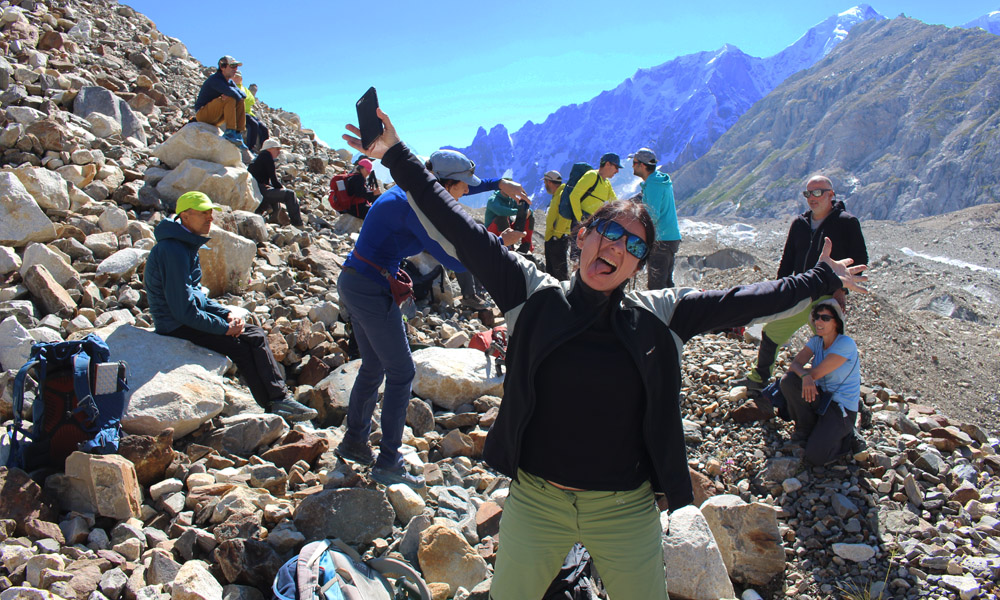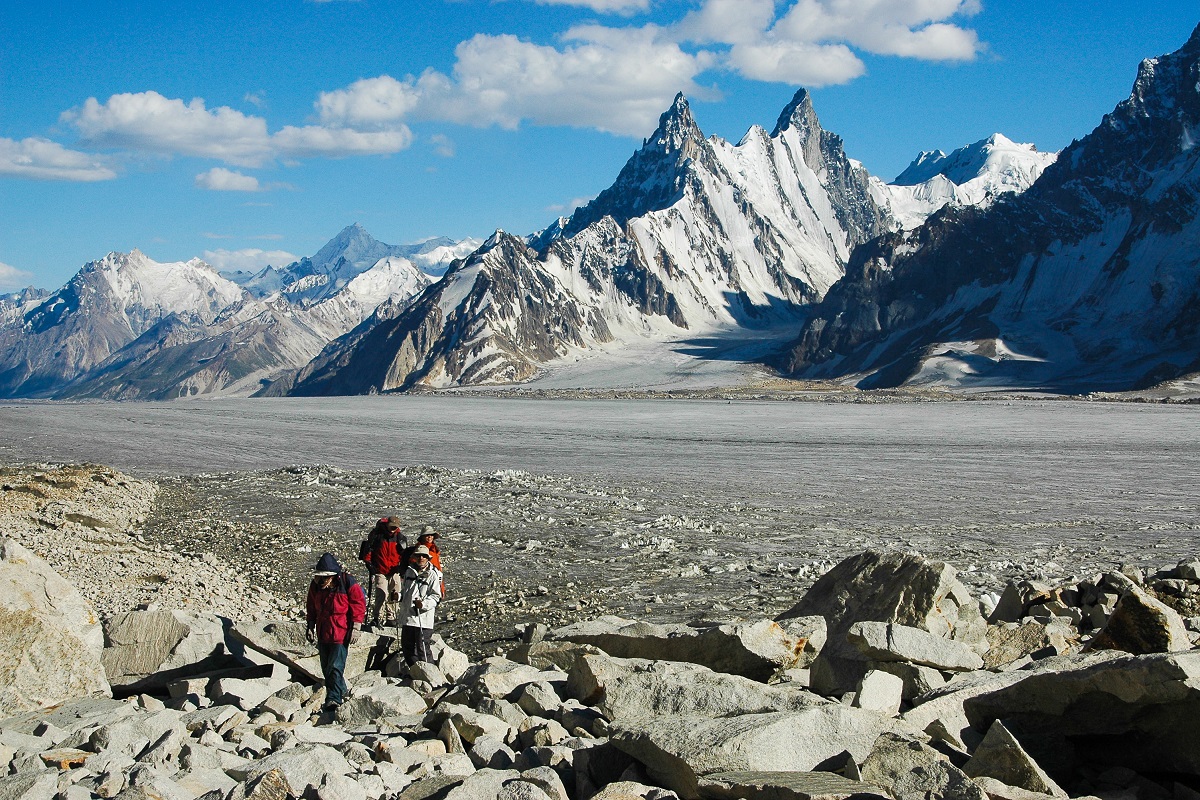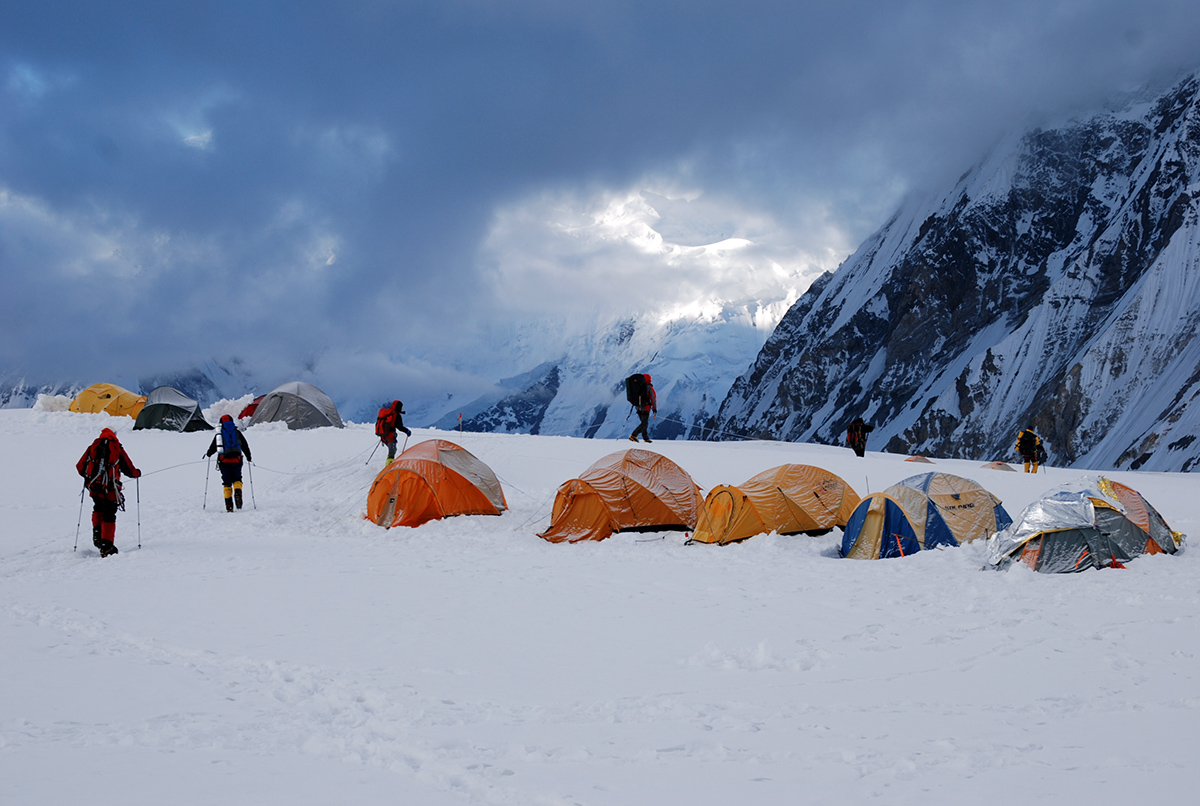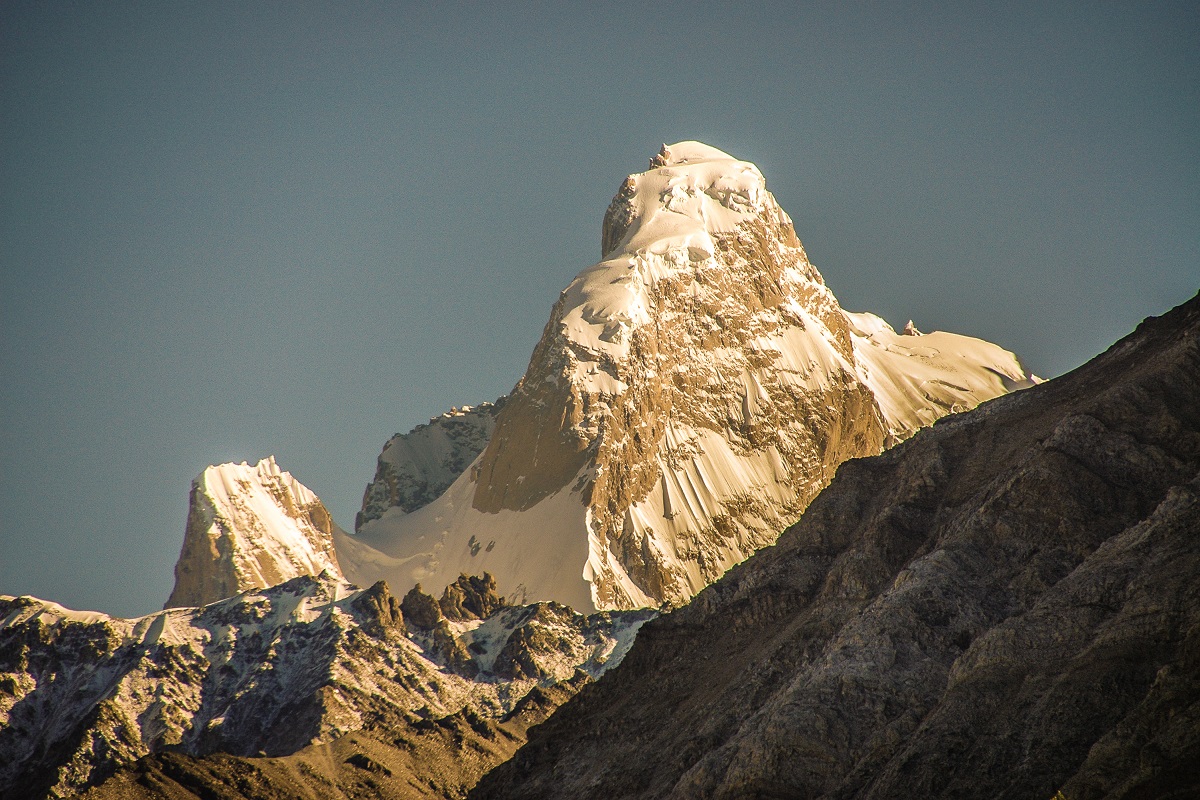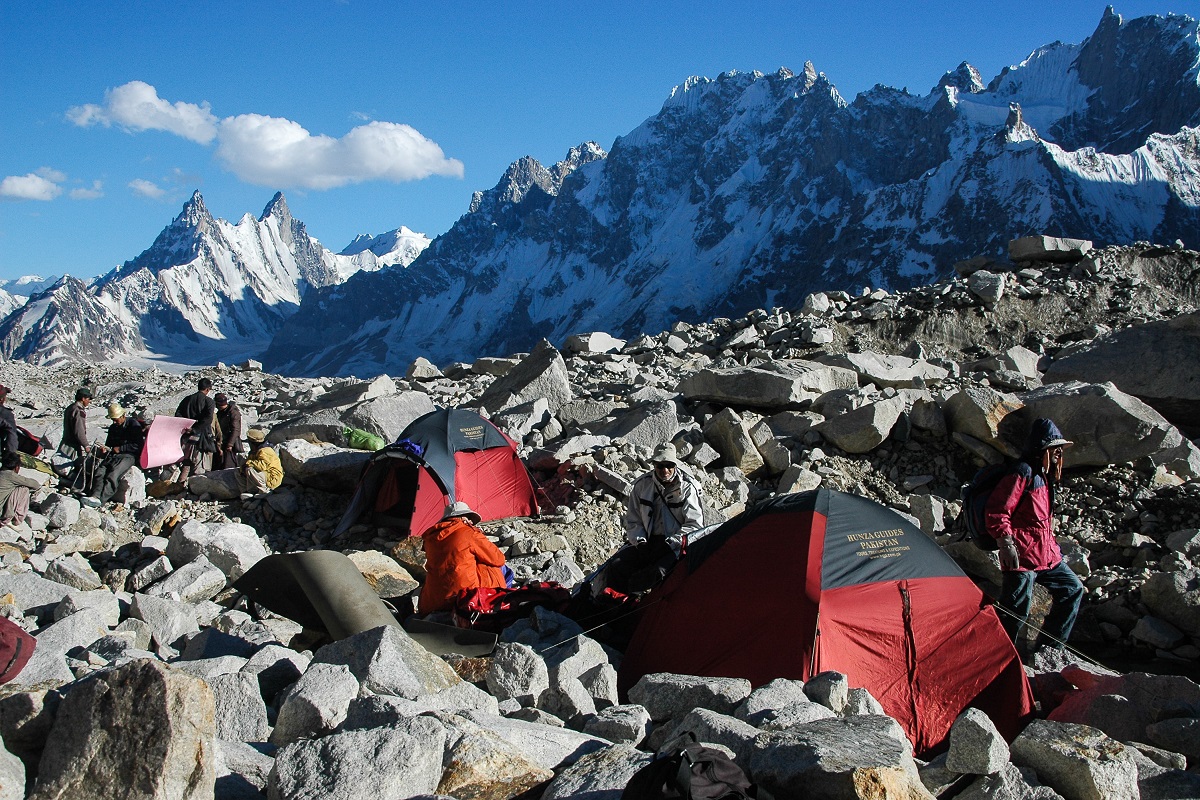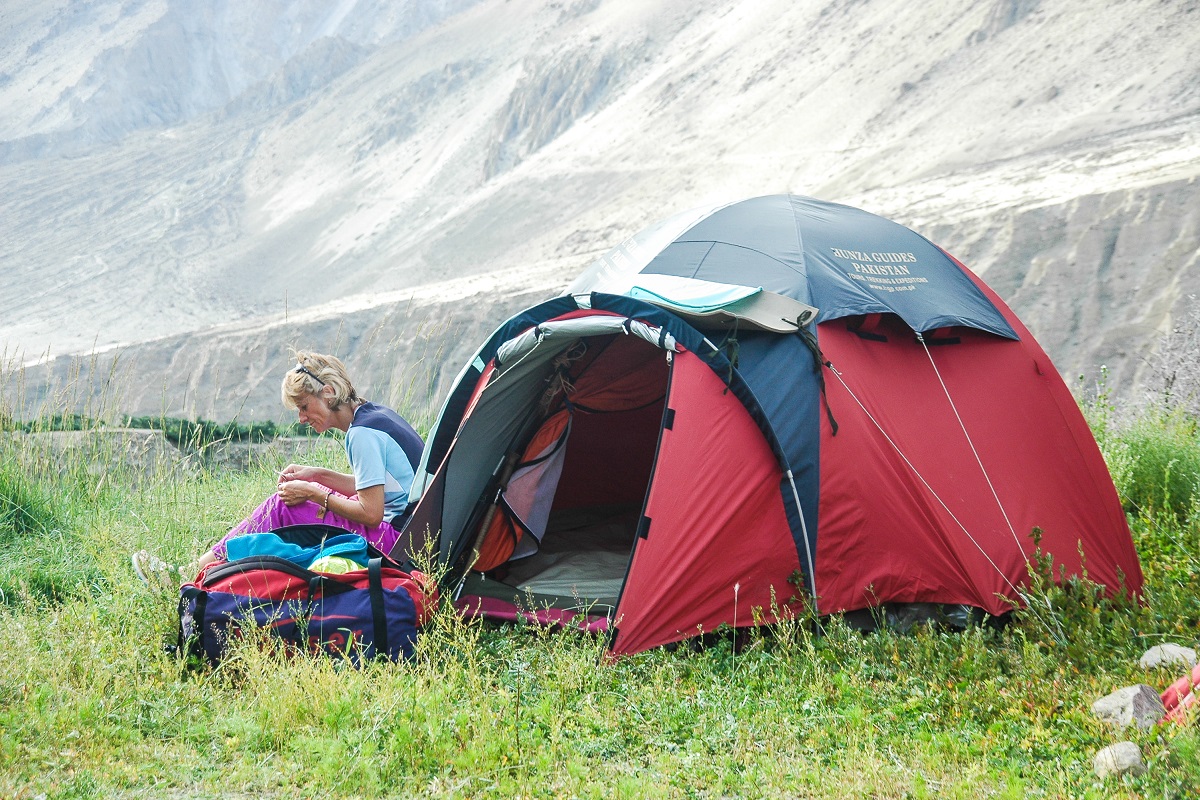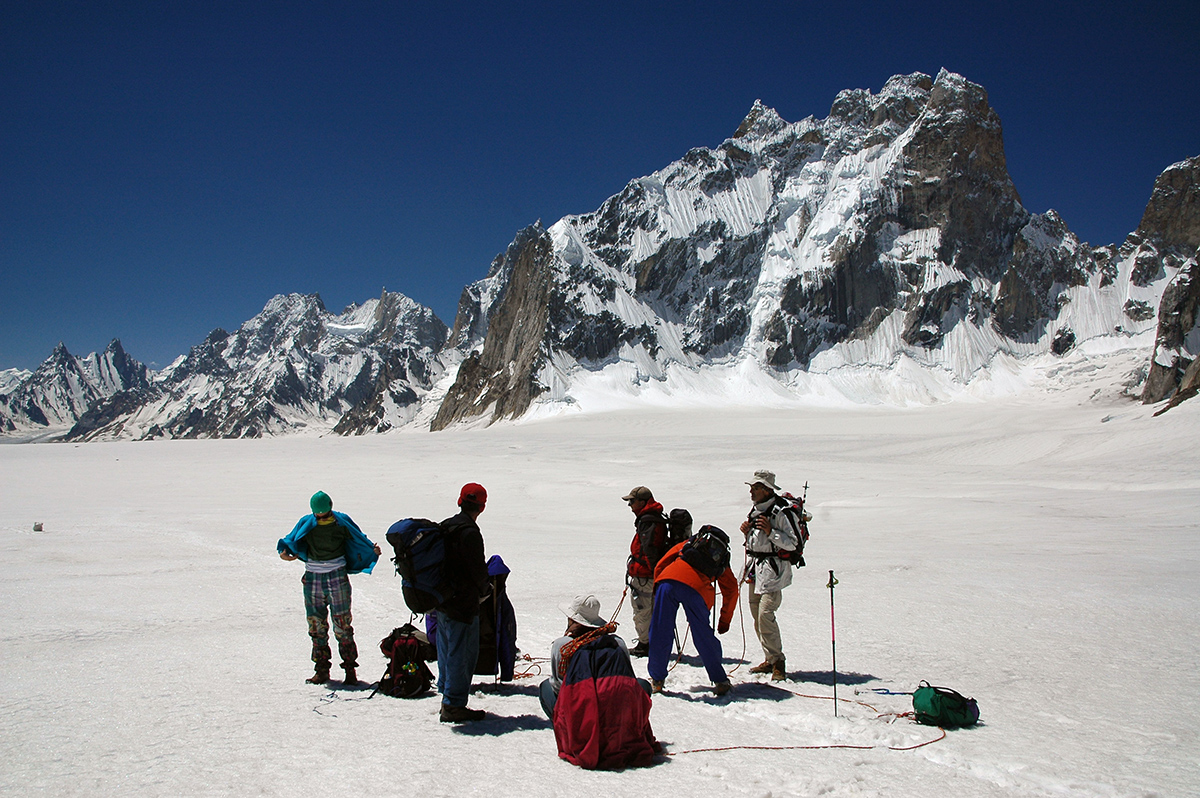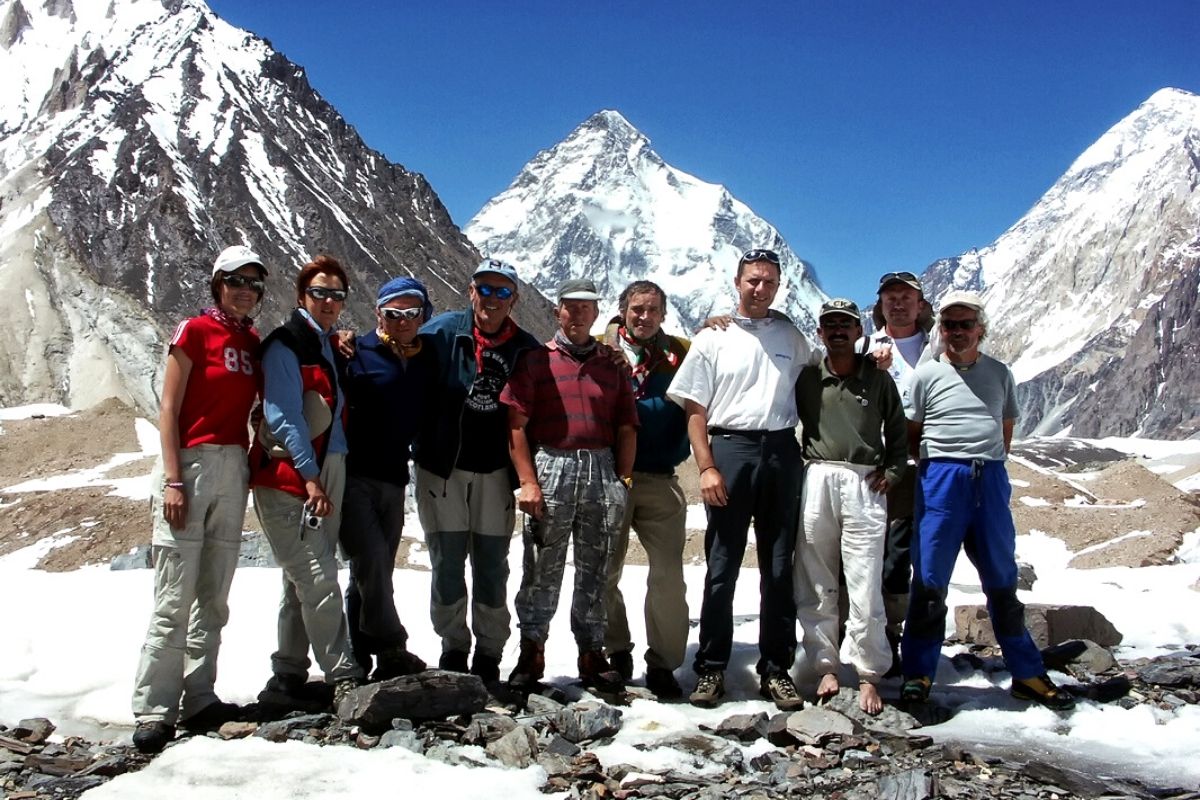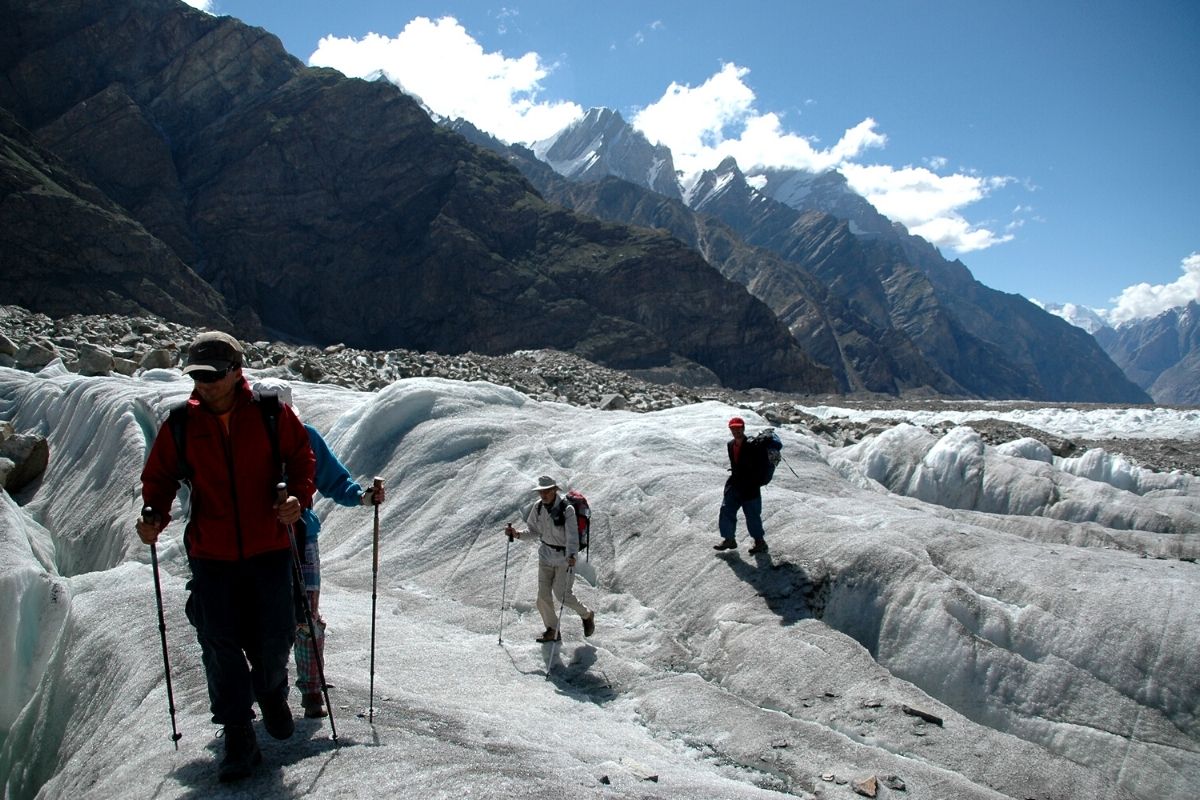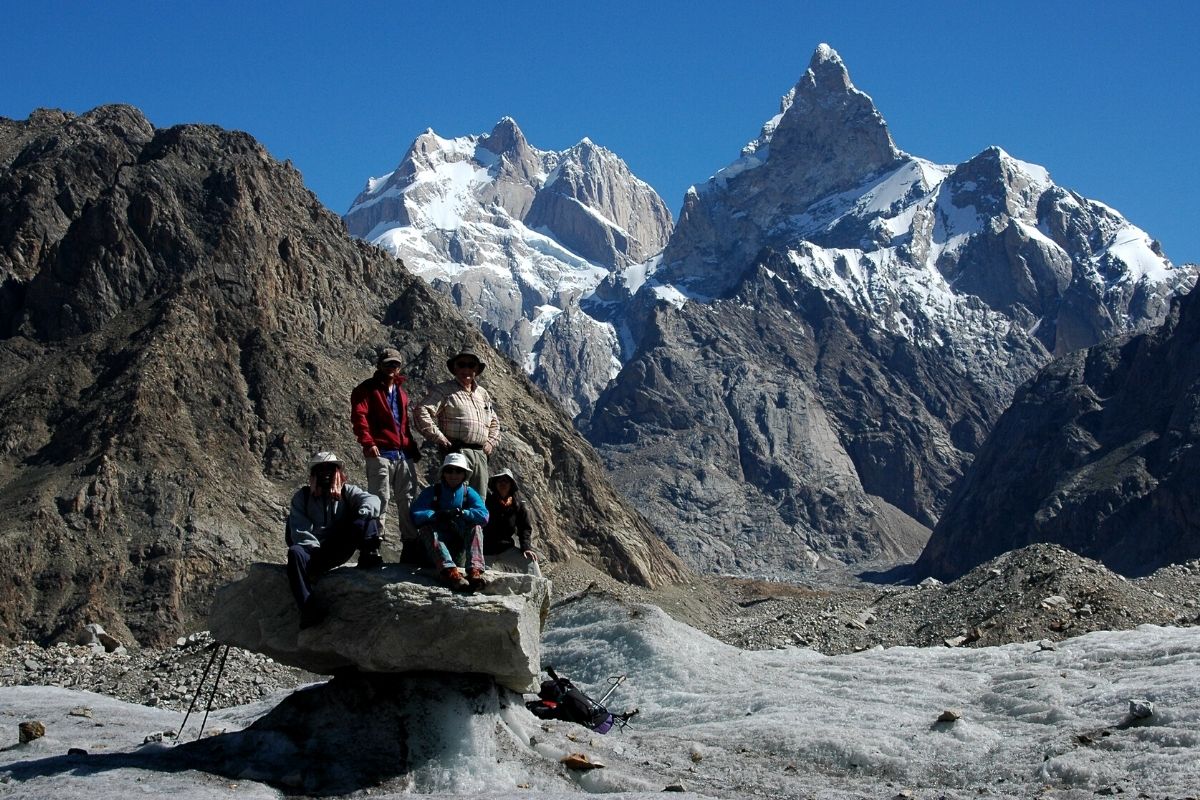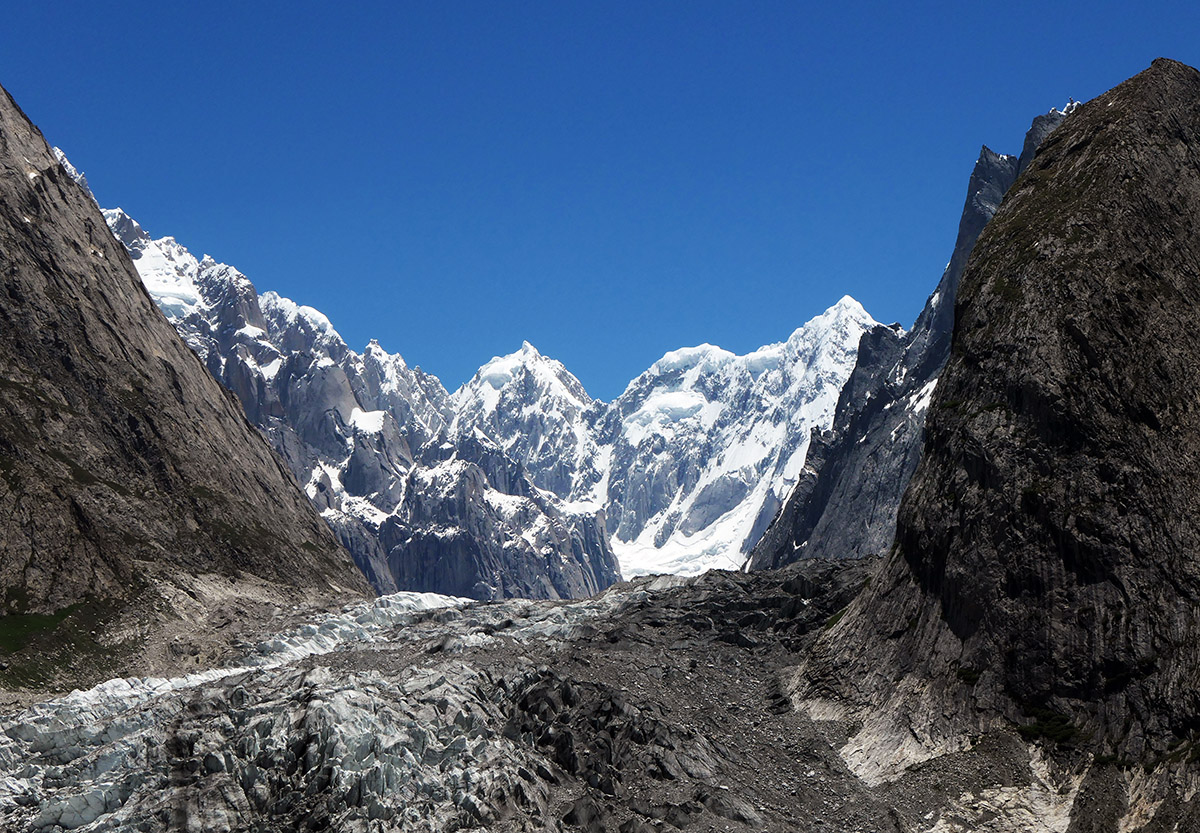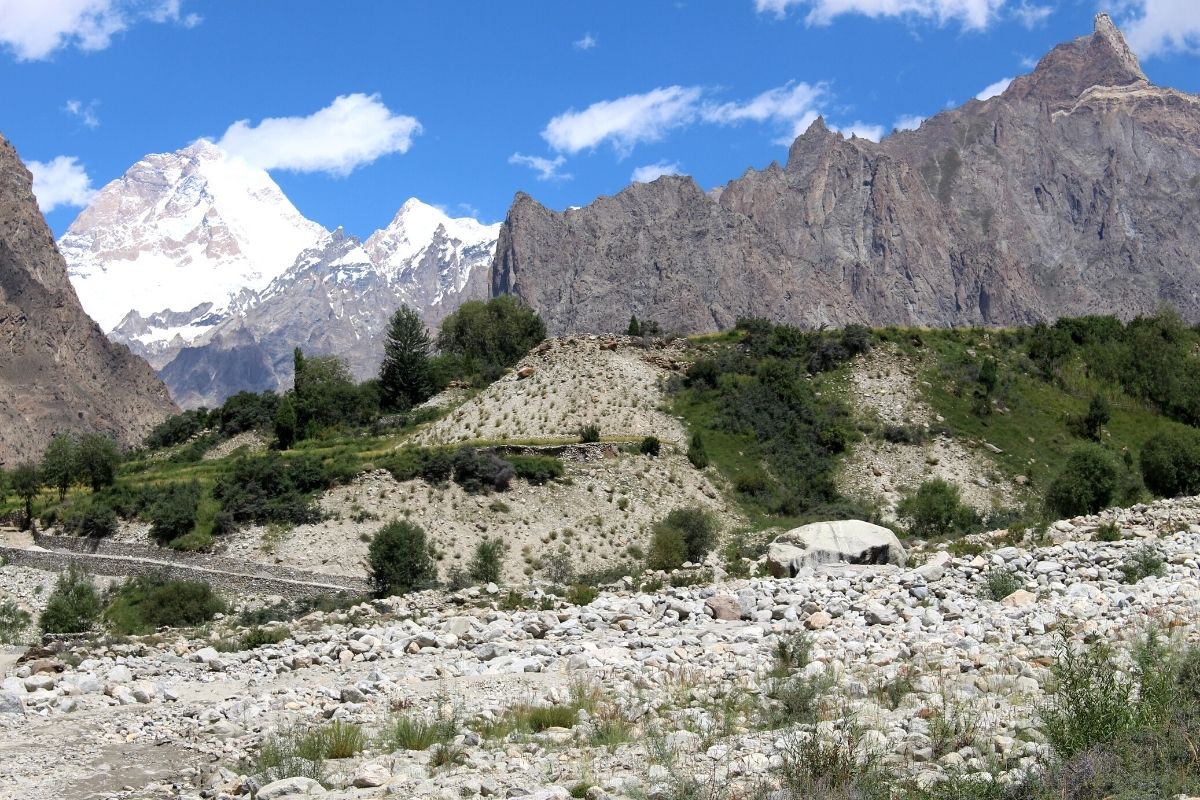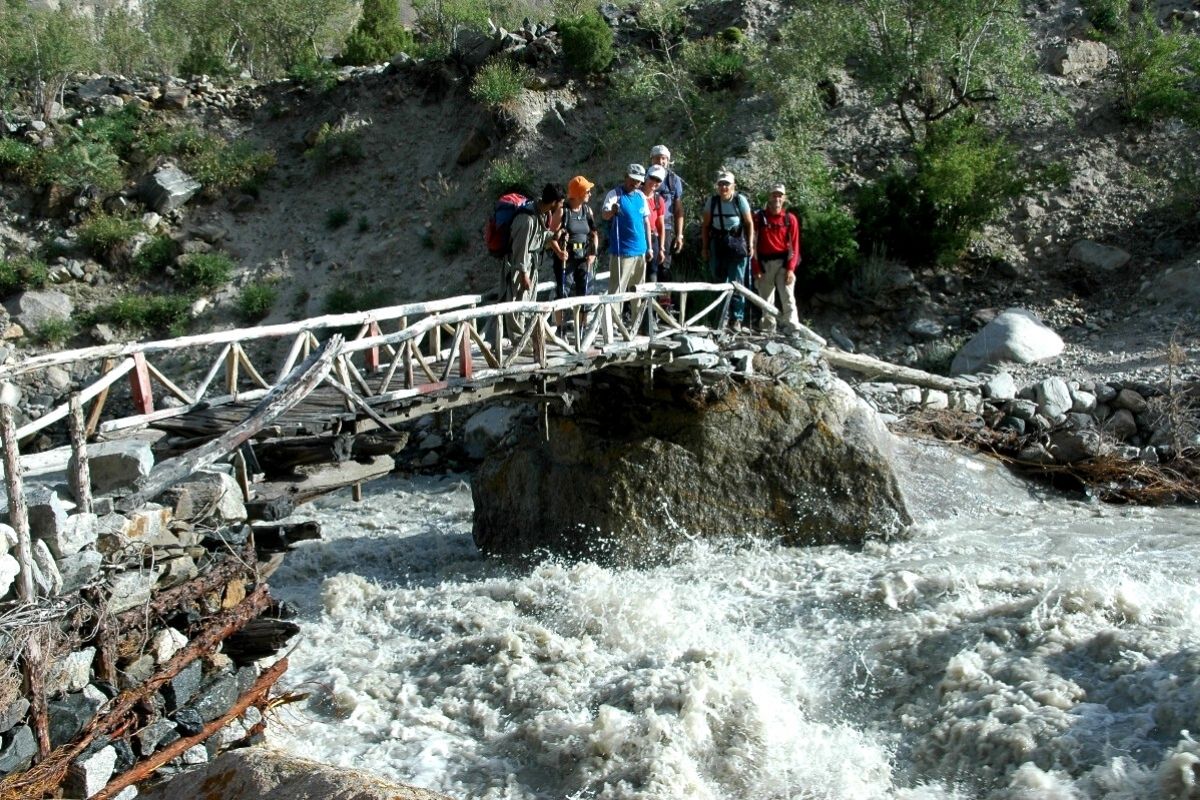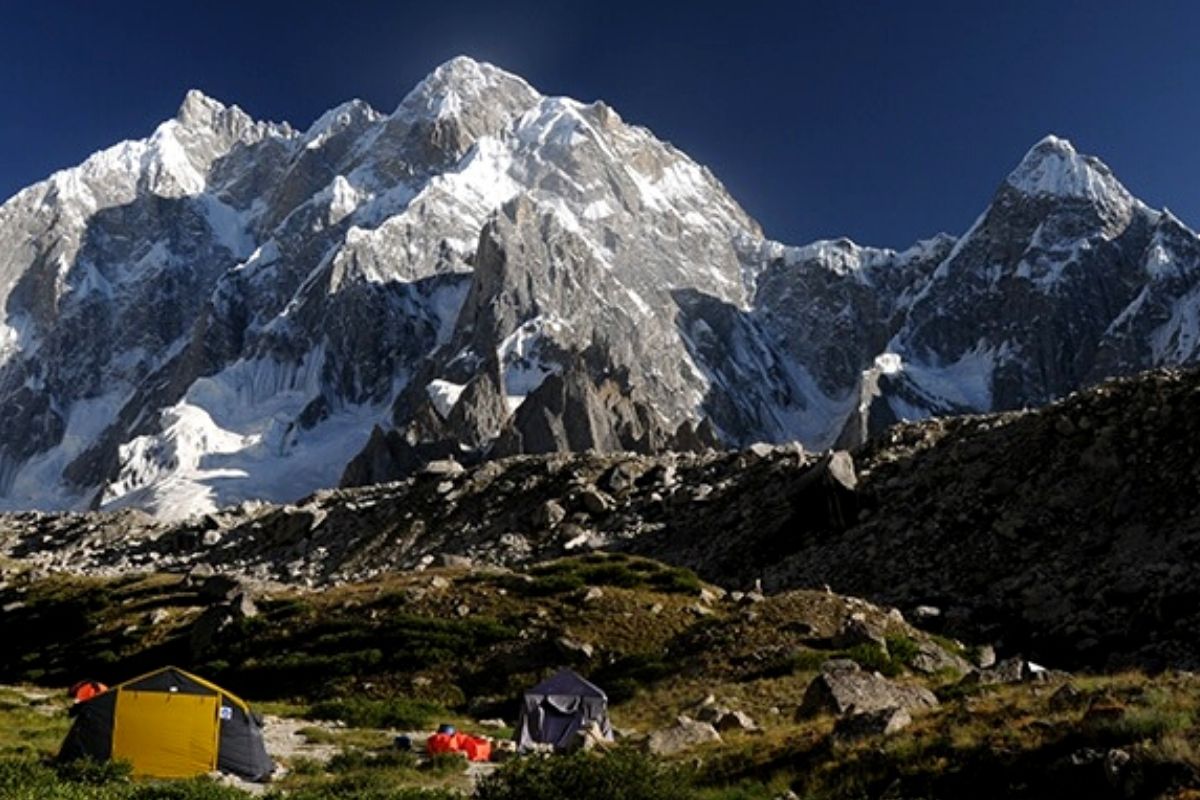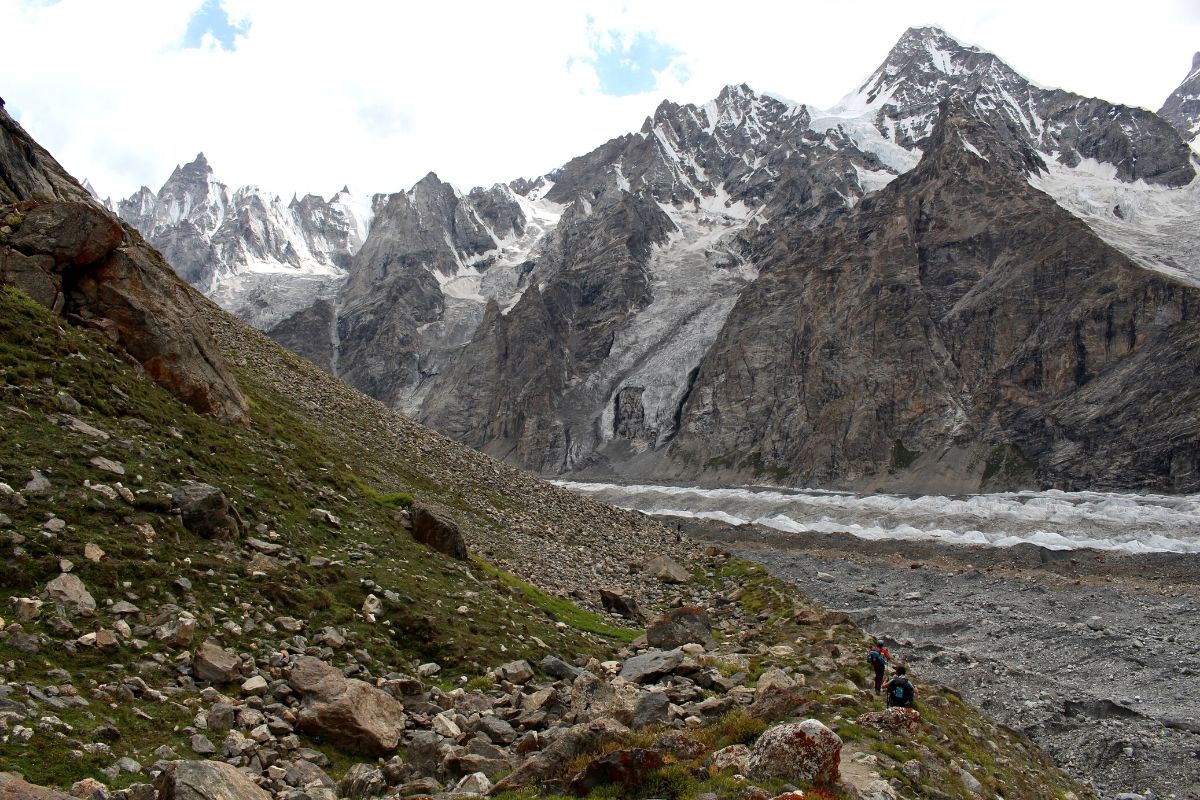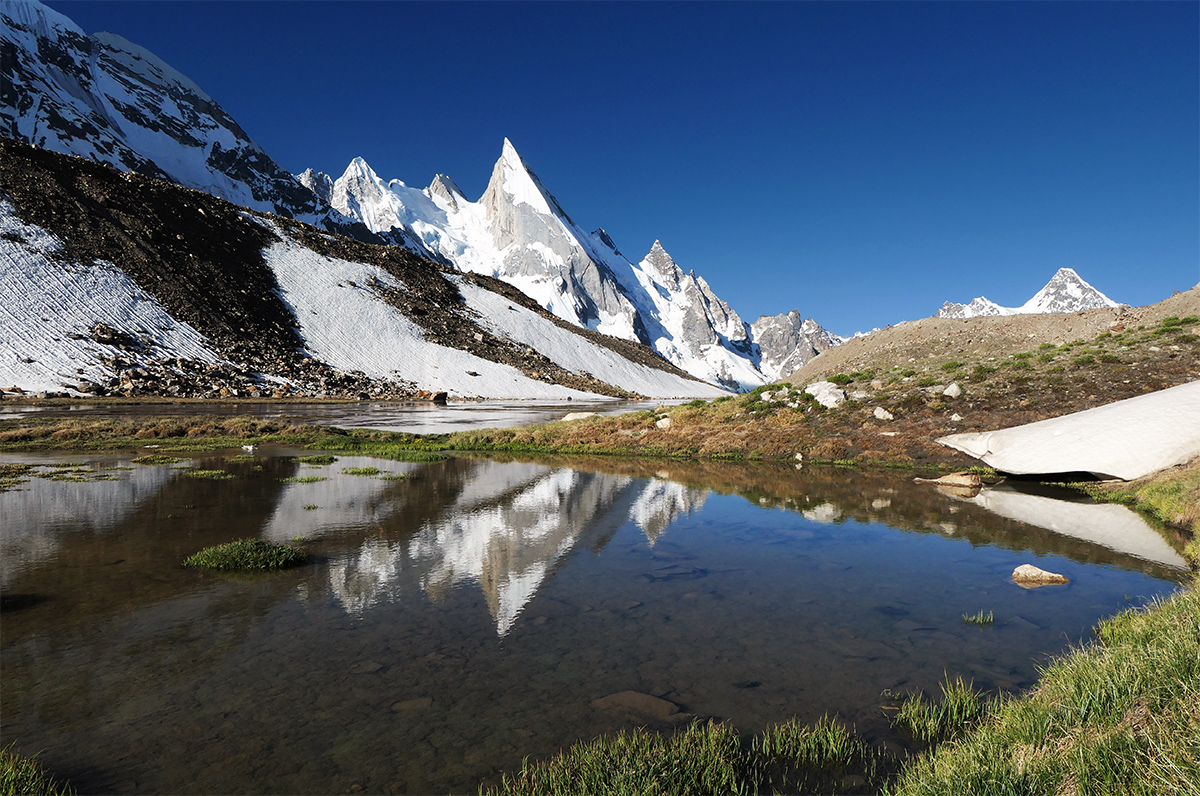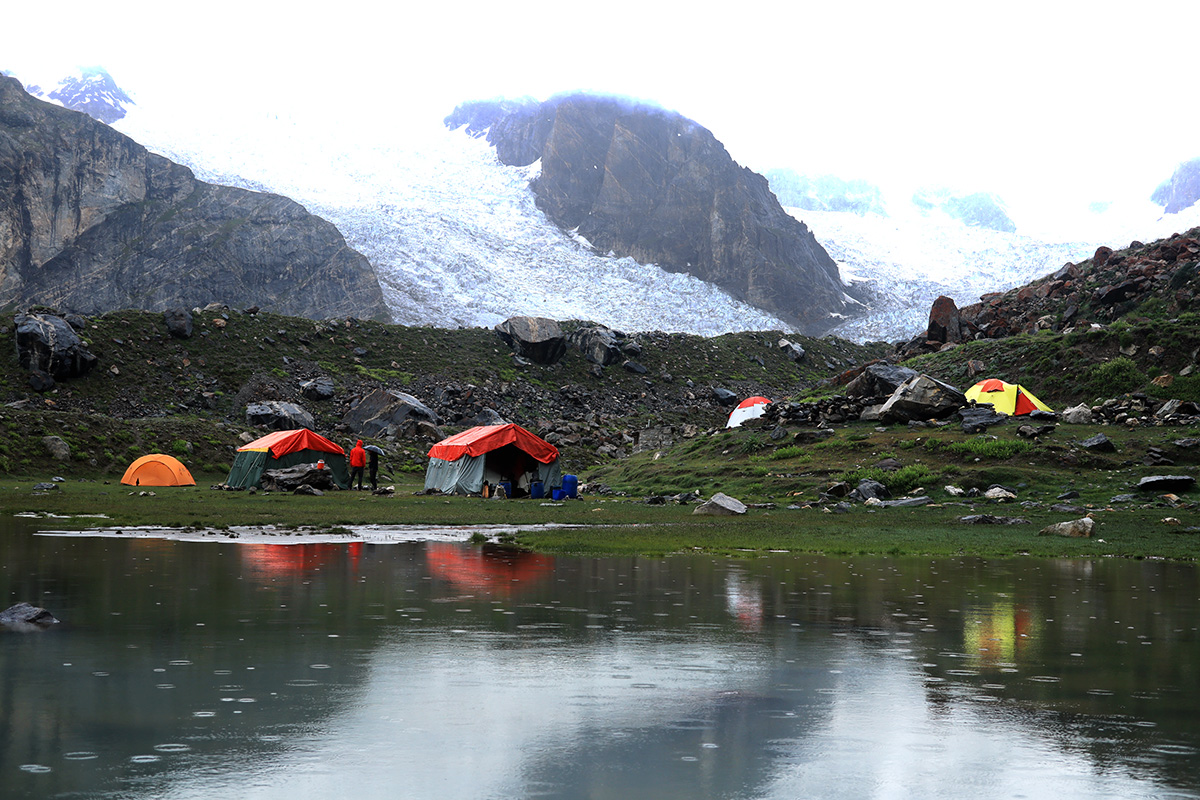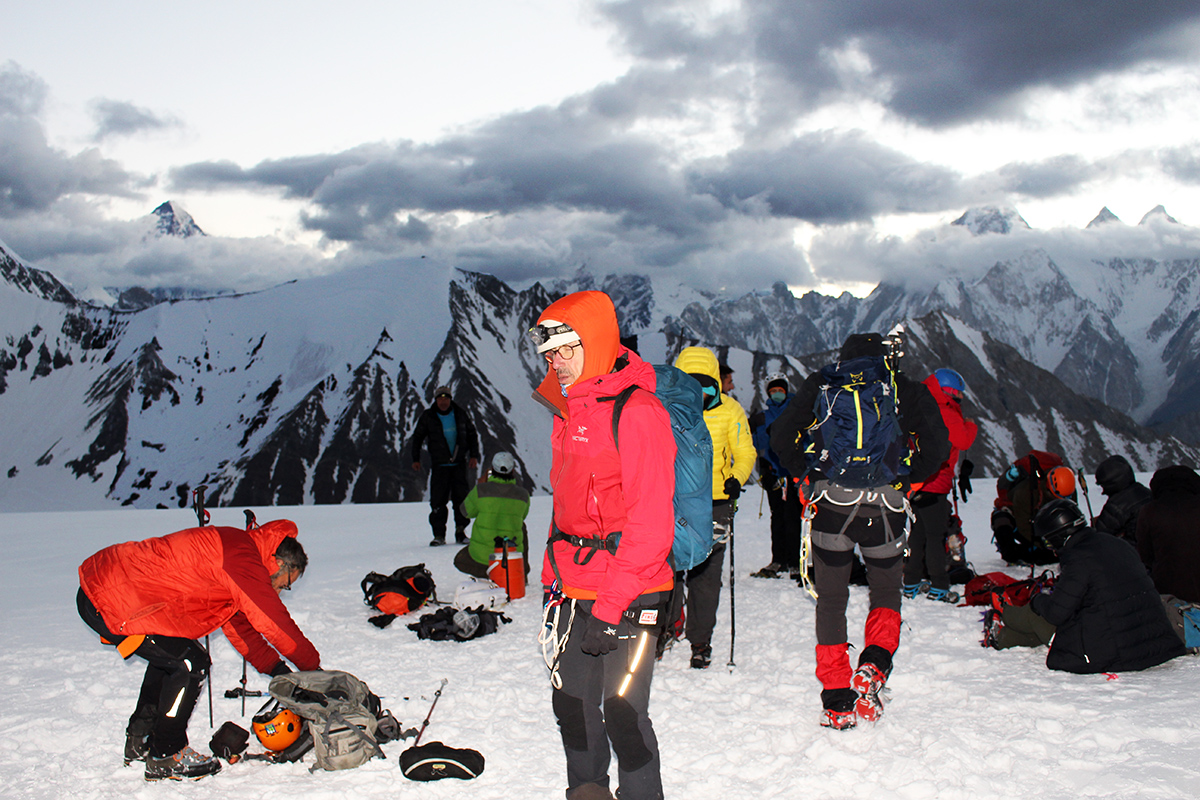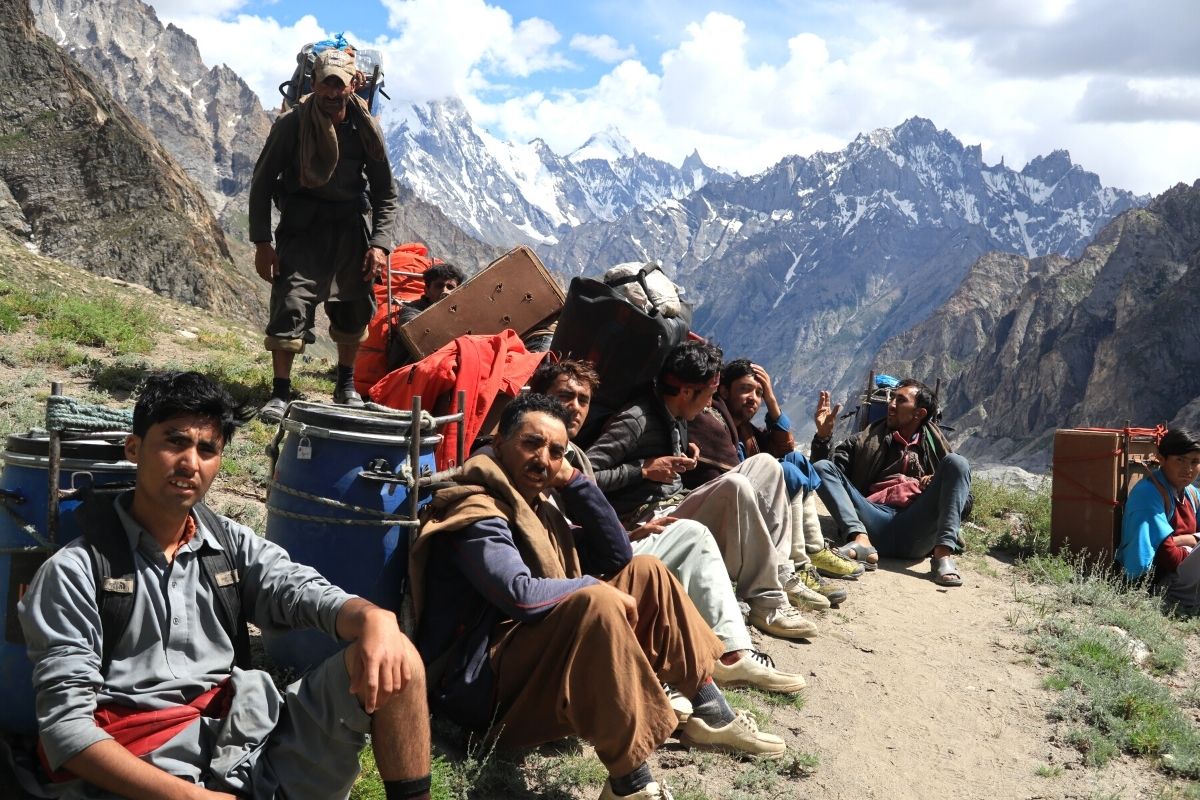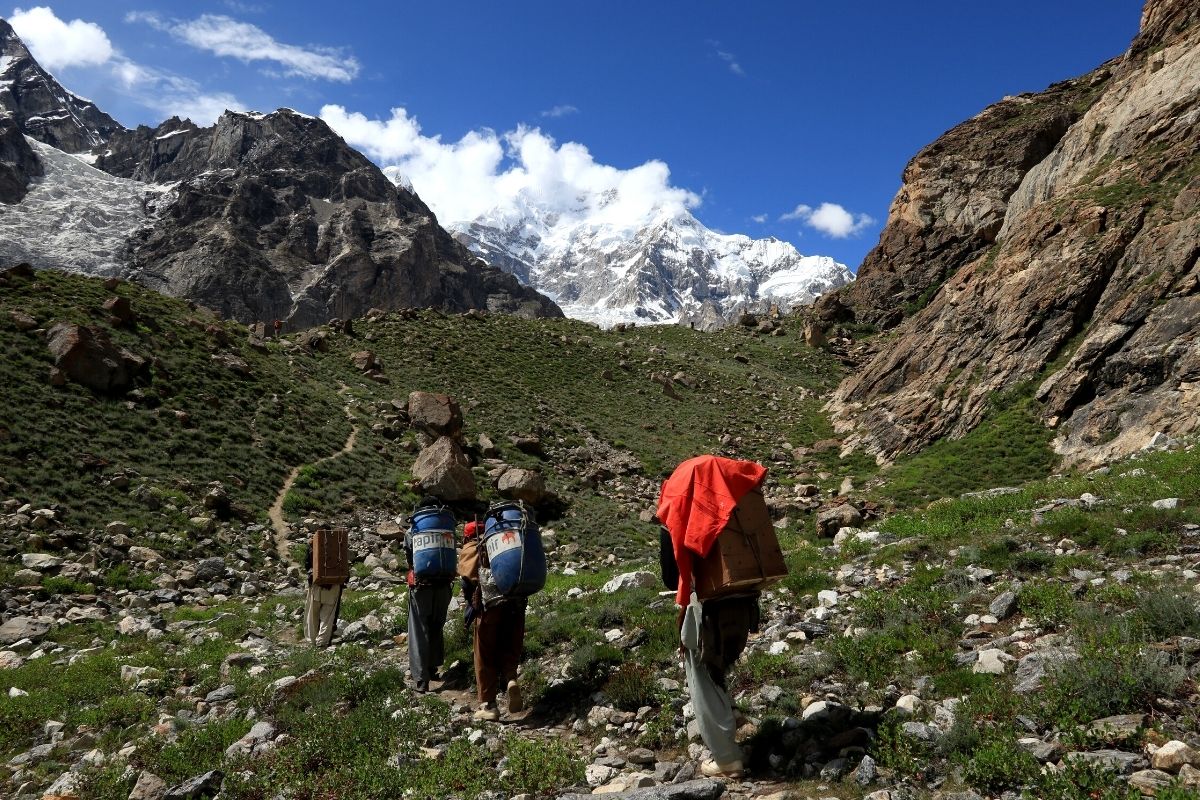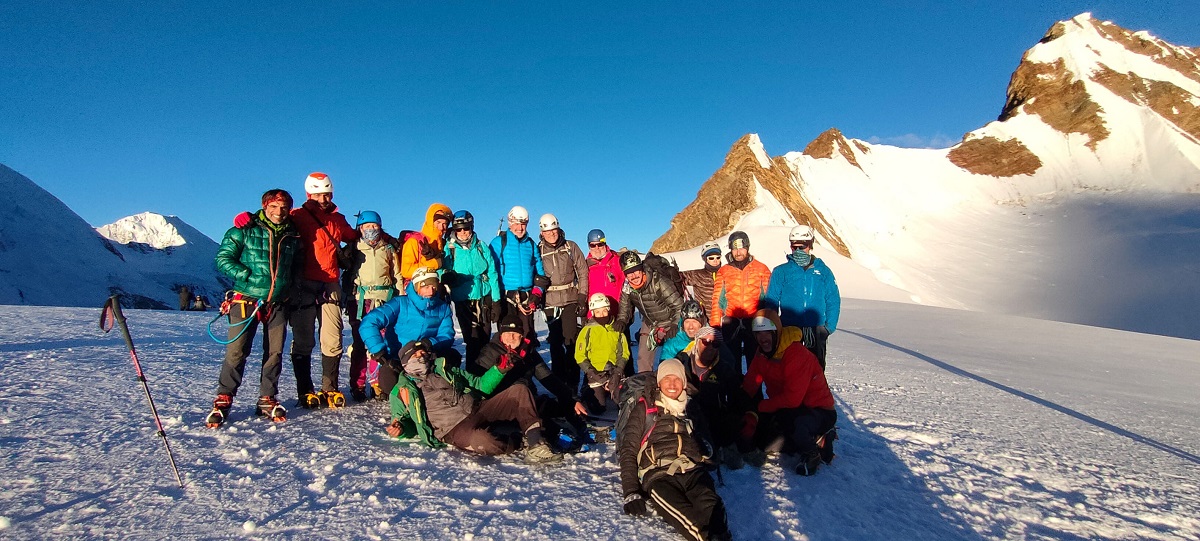
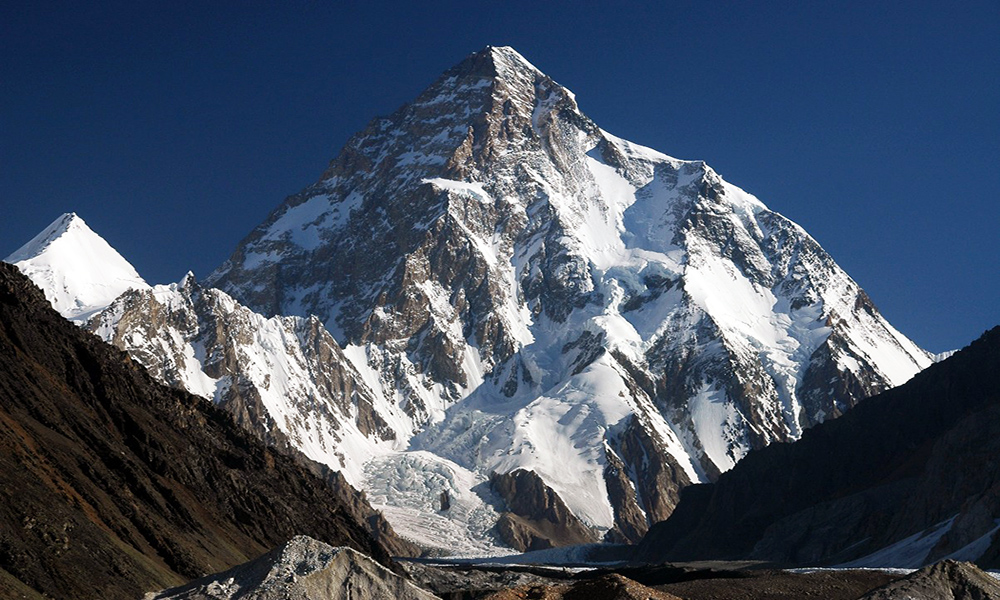
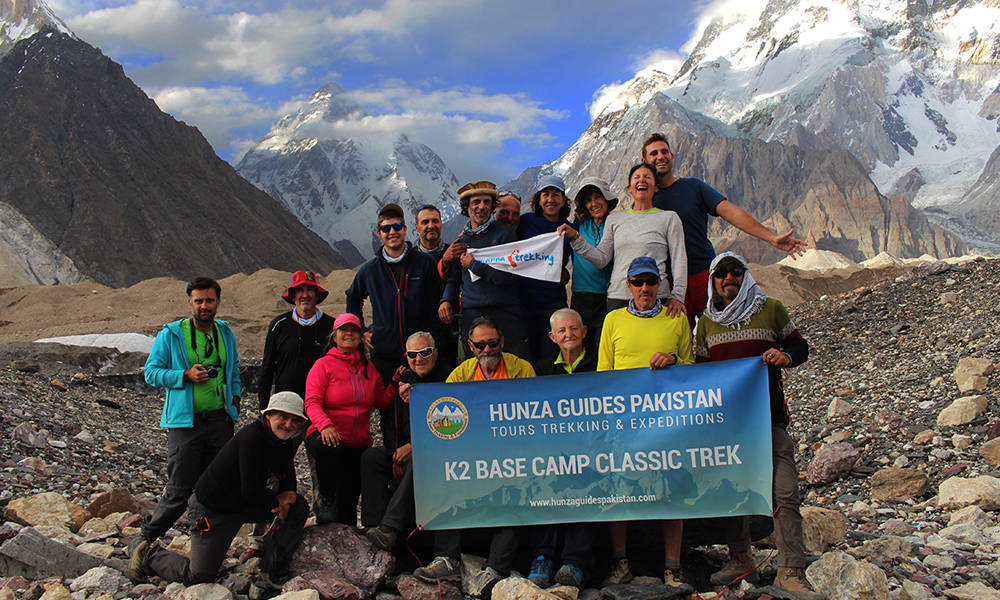
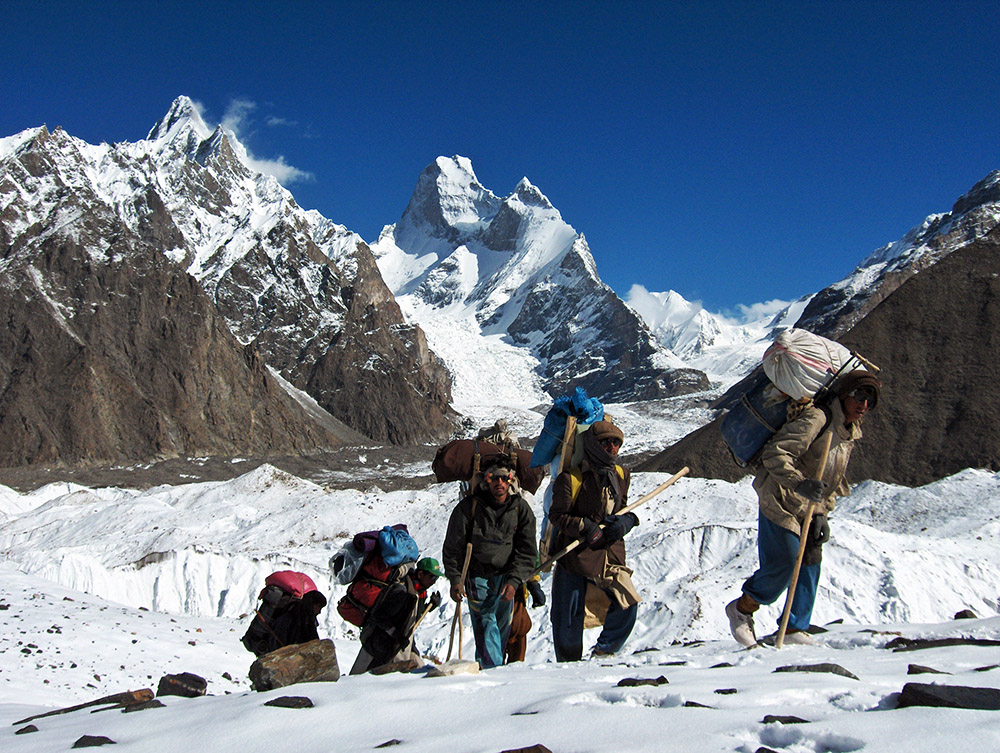
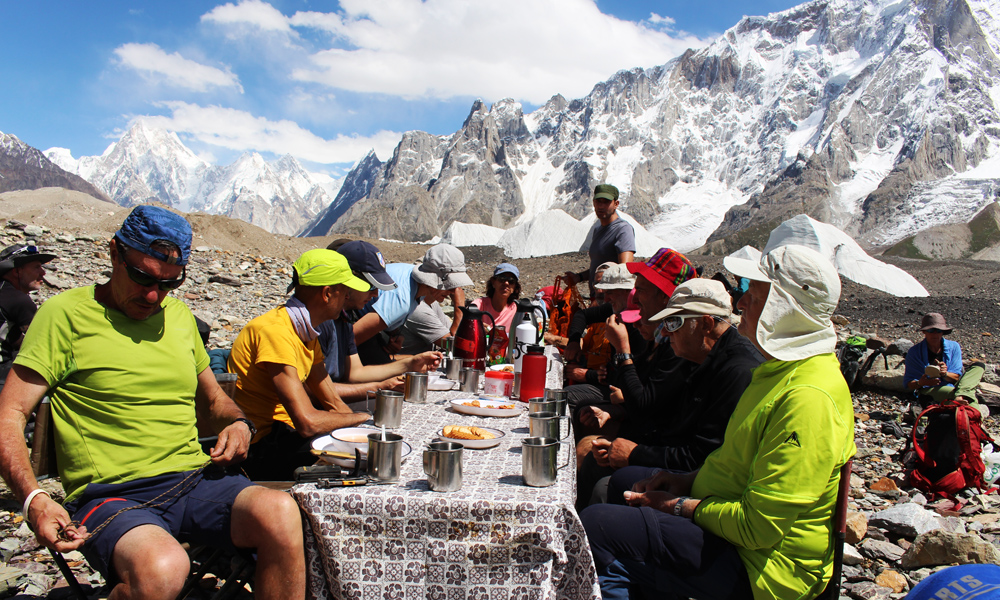
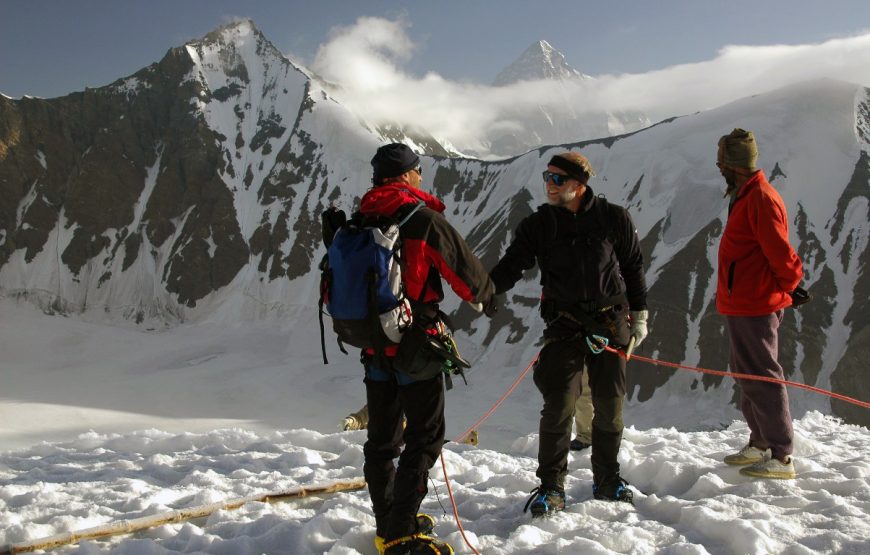
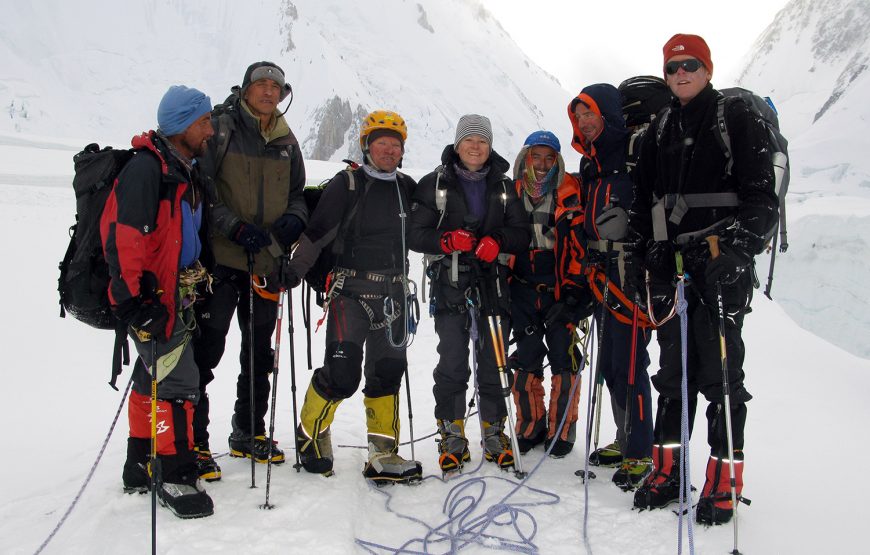
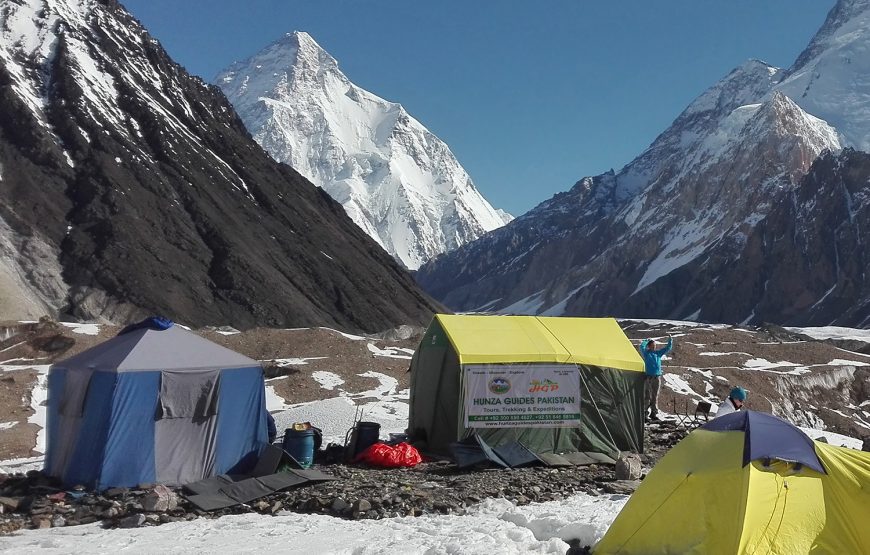
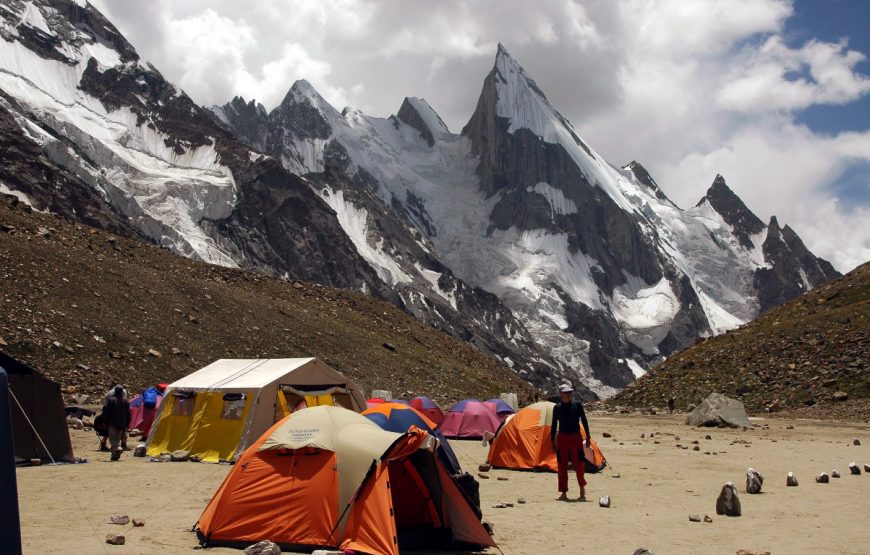
K2 Base Camp and Gondogoro La Trek
Registrations for the K2 Gondogoro La Trek are now open! We are offering a 20-day trek with full board services. We guarantee at least 8 departures every year.
This trek takes you through some of the most stunning landscapes in the world, including the famous K2 base camp and the Gondogoro La Pass. Our experienced guides and porters will ensure a safe and enjoyable trekking experience. Don’t miss this opportunity to explore the majestic beauty of Pakistan’s Karakoram range!
Below are the dates for the K2 Gondogoro La Trek:
| Trekking in Baltoro | Cost (USD) | Cost (EUR) |
| K2 Base Camp Trek (20 days) – ALL INCLUSIVE | US$ 2,050 US$ 2,385 | €1,955 €1,870 |
| K2 Base Camp (14 Days) – TREK ONLY | US$ 1,780 | €1,690 |
| K2 Base Camp & Gondogoro La Trek (20 days) – ALL INCLUSIVE | US$ 2,120 US$ 2,480 | €2,030 €2,430 |
| K2 Base Camp & Gondogoro La (14 days) – TREK ONLY | US$ 1,895 | €1,810 |
| Snow Lake Biafo Hisper Trek (21 days) – ALL INCLUSIVE | US$ 2,390 | €2,280 |
| Snow Lake Biafo Hisper Trek (15 days) – TREK ONLY | US$ 2,165 | €2,050 |
Gondogoro La Trek – Dates and Cost
The best period for K2 base camp & Gondogoro La trek starts from mid June to 10 September. Guaranteed departures – Minimum 8 Pax for each departure. The updated departure dates and status is mentioned in below given table.
| Trekking in Baltoro | Cost (USD) | Cost (EUR) |
| K2 Base Camp (14 Days) - TREK ONLY | US$ 2,095 | € 1,925 |
| K2 Base Camp Trek (20 days) - (Group Price) | US$ 2,500 | € 2,330 |
| K2 Base Camp Trek (20 days) - (Less than 6 pax) | US$ 2,880 | € 2,735 |
| K2 Base Camp & Gondogoro La (14 days) - TREK ONLY | US$ 2,165 | € 1,995 |
| K2 Base Camp & Gondogoro La Trek (20 days) - (Group Price) | US$ 2,585 | € 2,415 |
| K2 Base Camp & Gondogoro La Trek (20 days) - (Less than 6 pax) | US$ 2,965 | € 2,780 |
| Snow Lake Biafo Hisper Trek (21 days) - | US$ 2,980 | € 2,845 |
| Snow Lake Biafo Hisper Trek (15 days) - TREK ONLY | US$ 2,570 | € 2,415 |
| Start Dates | End Dates | Deposit | Availability | Register |
| 04-June | 23-June | US$ 300 | Available | |
| 17-June | 06-July | US$ 300 | Available | |
| 20-June | 09-July | US$ 300 | Available | |
| 01-July | 20-July | US$ 500 | Guaranteed | |
| 02-July | 21-July | US$ 500 | Sold Out | |
| 17-July | 05-August | US$ 500 | Available | |
| 02-August | 21-August | US$ 500 | Available | |
| 16-August | 04-September | US$ 500 | Available |
Highlights
- Views of K2, Broad Peak, Gasherbrum peaks, Chogolisa
- Walking in Concordia and the Baltoro Glacier
- One of the world`s top 5 trekking adventures
- Trek up to Godwin Austin glacier via Baltoro Glacier (5th longest and world’s largest outside the polar region)
- View 8,000 m peaks including Broad Peak (8,047 m) and K2 (8,611 m) from Goro II, Concordia
- Views of other peaks between 5,000m to 8,000m including Gasherbrum-III and IV, Masherbrum Peak & more.
- Views of Glaciers (e.g. Biafo, Vigne, Liligo, Dunge, Muztagh, Biango, Mandu, Khalkal and more), lakes and streams
Overview Gondogoro La Trek
K2 Base Camp and Gondogoro La Trek is one of the most sought-after trekking adventures in Pakistan. This 20-day trek takes you through the stunning Karakoram range, including visits to the famous K2 base camp and crossing the Gondogoro La Pass. The trek offers stunning views of some of the highest peaks in the world, including K2, Broad Peak, and Gasherbrum.
The trek starts from the small town of Skardu, located in the Gilgit-Baltistan region of Pakistan. From there, we drive to Askole, the last village before the start of the trek. The trail follows the Braldu river and takes us through beautiful valleys and over glacial moraines. We spend a night at Concordia, one of the most stunning campsites in the world, with stunning views of K2, Broad Peak, and Gasherbrum.
The trek to the K2 base camp is a highlight of the trip, as we get up close and personal with the world’s second-highest peak. The base camp is located at the foot of K2’s imposing face, and the view is truly awe-inspiring. After spending some time at the base camp, we head back down the valley towards the Gondogoro La Pass.
The crossing of the Gondogoro La Pass is the most challenging part of the trek. At over 5,500 meters (18,000 feet), the pass is steep and requires some technical climbing. However, the effort is well worth it, as the views from the top are truly spectacular. From there, we descend towards the beautiful Hushe valley, where we end our trek.
Our experienced guides and porters will ensure your safety and comfort throughout the journey. We provide full board services, including camping equipment, food, and transportation. The best time to undertake this trek is from mid-June to September 10th, and we offer guaranteed departures with a minimum of 8 people per departure.
Don’t miss this opportunity to explore the natural beauty of Pakistan’s Karakoram range and experience one of the world’s most epic trekking adventures.
Detailed Itinerary K2 Base Camp & Gondogoro La Trek
Welcome at Islamabad airport, and transfer to hotel.
Afternoon proceed for city tour of Islamabad and Rawalpindi, which includes famous Faisal Mosque, Shakar Parian, Pakistan monument, Damen Koh, Lok Versa, Museum, Rawalpindi old bazaar, Raja Bazaar.
Altitude: 540 M
Accommodation: Hotel
Meals: Breakfast, Lunch, Dinner
Today we take the short but spectacular flight to Skardu one hour. Afternoon is free to explore Skardu town.
Note: If our flight is cancelled due to bad weather, we will start the drive to Chilas via Babusar Pass 4,173 m, 461 km.
• Altitude: 2,228 M
• Accommodation: Hotel
• Meals: Breakfast, Lunch, Dinner
Free/preparation day in Skardu. Today we enjoy a free day in Skardu where we can visit the Bazaar and Khurpucho Fort.
Note: If our flight canceled on day 2, we will spend 8-9 hours driving from Chilas to Skardu along with Indus River.
• Altitude: 2,228 M
• Accommodation: Hotel
• Meals: Breakfast, Lunch, Dinner
Today we take the spectacular drive by jeeps to Askoli village 6-7 hours, the starting point of our trek. Overnight in tents.
• Altitude: 3,000 M
• Accommodation: Camping
• Meals: Breakfast, Lunch, Dinner
Trek to Jhola 6-7 hours 12.6 km
The early morning light finds us beginning our trek as the Loads are distributed among the porters. Walking along the Braldu River. It takes 3 to 4 hours from Askoli to Korofoung. After lunch continue trek to Jhola (3-4 hours) you have panoramic view of Bakhor Das peak 5809m) also mighty Biafo Glacier. Follow the riverside trail to the confluence of the Biafo and Dumordo rivers. Cross the formidable Domordo River at Jhola which flows from the Panmah glaciers.
• Altitude: 3,200 M
• Accommodation: Camping
• Meals: Breakfast, Lunch, Dinner
Trek to Paiyu 6-7 hours 16.6 km.
This is an undulating walk, difficult at times, with the first views of dramatic mountains ahead. There is a rest stop by some tamarisk trees beside the stream flowing down from Paiyu Peak, where we saw ibex tracks and fox spore. The trail climbs to a vantage point from which you see the snout of Baltoro Glacier and, in the far distance, a magnificent panorama of the Cathedral and Trango Towers and left of them, the unmistakable triangle of K2 .
• Altitude: 3,450 M
• Accommodation: Camping
• Meals: Breakfast, Lunch, Dinner
Free day for local exploration and Porter will prepare their food for further K2 Base Camp and Gondogoro La trek, We enjoy a slow start today taking in our stunning surroundings. We take a short acclimatization trek during the day and in the evening sing and dance with the porters.
• Altitude: 3,450 M
• Accommodation: Camping
• Meals: Breakfast, Lunch, Dinner
Trek to Khubertse 5-6 hours 10.8 km.
Another stunning day on our journey to K2 Base Camp. The participants will experience the stunning views as they move ahead, The views of Paiyu Peak 6,610 m, Uli Biaho 6,417 m, Great Trango Tower 6,286m, Lobsang Spire 5,707 m and the Cathedral Towers.
• Altitude: 3,990 M
• Accommodation: Camping
• Meals: Breakfast, Lunch, Dinner
Trek to Urdukas 3-4 hours 5.1 km.
A shorter day today as we navigate our way over the moraines to reach Urdukas camp. The participants will experience the stunning views as they move ahead, with great views of Trango Towers, Uli Biaho, baltoro cathedrals and Paiyu Peak. Cathedral Towers.
• Altitude: 4,050 M
• Accommodation: Camping
• Meals: Breakfast, Lunch, Dinner
Trek to Goro Camp 12.1 km, 5-6 hours.
A special day today as we will be greeted by our first full view of the giant peaks of the Karakorum. Masherbrum 7821 m, Muztagh Tower 7,284 m, G-IV (7,925 m), Miter Peak 6,025 m and Biarchedi Peak 6,781 m.
• Altitude: 4,380 M
• Accommodation: Camping
• Meals: (Breakfast, Lunch, Dinner)
Trek to Concordia 9.2 km, 5-6 hours.
Where the Baltoro, Abruzzi and Godwin Austen glaciers meet. The 360-degree panoramic view here is one of the most spectacular sights in the world. Concordia the joining of the five glaciers you will be in the heart great Mountain K2, 8611 m, Broad Peak 8047 m, Angel Peak 6858 m to the left and to the East Baltoro Kangri, Kondus, Snow Dome, Golden Throne and numerous nameless mountains all around this is an exciting day of your trip.
• Altitude: 4,650 M
• Accommodation: Camping
• Meals: Breakfast, Lunch, Dinner
Today it is golden opportunity to see 7000 m to above 8000 m peaks including mighty K2 (8611 m) Broad Peak 8047 m, Gasherbrum-IV 7925 m, Miter Peak 6025 m Golden Throne 7240 m. Afterwards we continue on to K2 Base Camp (5,135 m) and then return to Concordia for the night.
• Altitude: 4,650 M
• Accommodation: Camping
• Meals: Breakfast, Lunch, Dinner
Trek to Ali Camp 9.5 km, 6 hours.
We leave Concordia and traverse the Baltoro Glacier, crossing a number of crevasses. We turn in early tonight ahead of a midnight departure to cross the Gondogoro La Pass tomorrow.
• Altitude: 5,010 M
• Accommodation: Camping
• Meals: Breakfast, Lunch, Dinner
Trek to Hispung after crossing Gondogoro La 5680 m, 8-9 hours.
The view from the pass is exciting and superb of K2 and all the 8000 meters.
The views from the pass including K2, Board Peak, Gasherbrum I to IV are unparalleled, making all the hard work worthwhile.
• Altitude: 4,680 M
• Accommodation: Camping
• Meals: Breakfast, Lunch, Dinner
Today we descend the Gondogoro Glacier to reach Daltsampa camp 6.8 km, with Commanding views of the Gondogoro Glacier, Yermanadu Kangri (23,495 ft.) Masherbrum South (25,604 ft) and the Masherbrum La. After lunch coninue trek to Saicho, it is an easy day from here to the next camp two hours on Gondogoro glacier and We leave the rock and ice behind us as we walk through meadows and pastures to reach Saicho.
• Altitude: 3,300 M
• Accommodation: Camping
• Meals: Breakfast, Lunch, Dinner
Trek to Hushe 9.3km 4-5 hours,
This will be the most interesting day of the trip the last walking day for the members and the porters to reach Hushe the last village of Ganche District in the Khaplu Valley.
• Altitude: 3050 M
• Accommodation: Camping
• Meals: Breakfast, Lunch, Dinner
Drive to Skardu 6-7 hours.
The return road journey offers amazing sightseeing starting with passage through other villages of Hushe valley displaying small agricultural lands and mountain farming activities as we move downstream. We eventually come to the confluence where Shyok river (flowing from Ladakh) meets Hushey river.
• Altitude: 2,228 M
• Accommodation: Hotel
• Meals: Breakfast, Lunch, Dinner
We fly back to Islamabad. Afternoon is free for exploring.
Note: If our flight is cancelled due to bad weather, we will start the drive to Chilas travelling for 9 hours along with Indus River.
• Altitude: 540 M
• Accommodation: Hotel
• Meals: Breakfast, Lunch, Dinner
Enjoy a free day in Islamabad for exploring, sightseeing and shopping.
Note: If our flight on day 17 cancelled we will spend 11-12 hours driving from Chilas to Islamabad via Babusar Pass 4173 m.
• Altitude: 540 M
• Accommodation: Hotel
• Meals: Breakfast, Lunch, Dinner
Transfer to Islamabad airport for international flight
- All domestic flights and road transfers
- All hotel accommodation (twin sharing room)
- All trekking accommodation
- All camping site and bridge fees
- All trekking logistics (all tents, non-personal equipment and tools etc)
- All meals (breakfast, lunch and dinner)
- Licensed professional guide (government requirement)
- Government trekking permit fees and paperwork
- Waste management fees (government requirement)
- Support staff (cook, assistant(s) etc)
- Porter for personal luggage (15 kgs)
- First aid medicine kit (basic)
- Satellite phone for emergencies
- D3V sleeping tent, Toilet Tent, Shower Tent.
- Trekking Fee 300 USD
- Central karakoram National park (CKNP Fee 150 USD)
- International airfare and airport taxes.
- Visa fee for Pakistan and personal insurance of the clients.
- Tips for drivers, porters and staff
- Single Supplement
- Transfers to and from airports for participants making individual air arrangements
- Optional excursions or deviations from the scheduled tour
- Sleeping bag and all personal expenses such as telephone charges, liquor or soft drinks,
- Room service, gratuities for personal services, items of a purely
- Any other service that is not mentioned in the list above.
Fields marked with an * are required
Our staff will be in touch via email within 24 hours once you complete the registration form below.
Please contact us for any further details at info@hunzaguides.com


